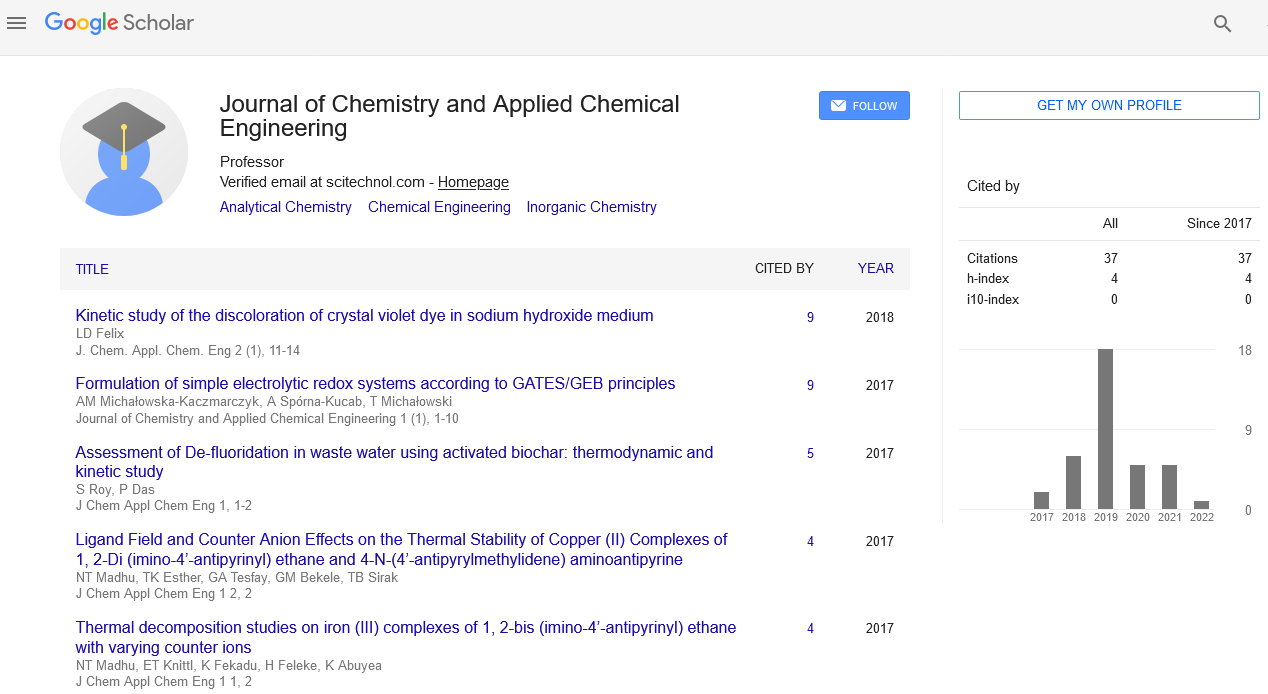Editorial, J Chem Appl Chem Engl Vol: 9 Issue: 1
Advances in Process Intensification
Rakesh Sharma*
Department of Chemical Engineering, Indian Institute of Technology (IIT) Delhi, India
- *Corresponding Author:
- Rakesh Sharma
Department of Chemical Engineering, Indian Institute of Technology (IIT) Delhi, India
E-mail: rakesh.sharma@iitd.ac.in
Received: 01-Mar-2025, Manuscript No. JCACE-25-170218; Editor assigned: 4-Mar-2025, Pre-QC No. JCACE-25-170218 (PQ); Reviewed: 20-Mar-2025, QC No JCACE-25-170218; Revised: 26-Mar- 2025, Manuscript No. JCACE-25-170218 (R); Published: 30-Mar-2025, DOI: 10.4172/Jcace.10000
Citation: Rakesh Sharma, Department of Chemical Engineering, Indian Institute of Technology (IIT) Delhi, India. J Chem Appl Chem Engl 9:1.
Copyright: © 2025 Rakesh Sharma, this is an open-access article distributed under the terms of the Creative Commons Attribution License, which permits unrestricted use, distribution, and reproduction in any medium, provided the original author and source are credited.
INTRODUCTION
Process intensification (PI) in chemical engineering aims to make industrial processes more efficient, sustainable, and cost-effective. It includes the design of equipment and methodologies that improve energy efficiency, reduce environmental impacts, and increase safety.
Key Research Areas
Microreactors: Enable fast reactions with high surface-to-volume ratios [1].
Reactive Distillation: Integrates reaction and separation to save energy [2].
Membrane Reactors: Couple chemical reaction with selective separation [3].
Intensified Heat Exchangers: Compact designs improve energy recovery [4].
Supercritical Fluid Processing: Provides greener solvents and improved yields [5].
REFERENCES
- Hessel V. Novel process windows for chemical reaction engineering. Chemical Engineering Science, 2005; 60: 2479–2501.
- Sundmacher K, Kienle A. Reactive Distillation. Wiley-VCH. 2003.
- Tsotsis TT. Catalytic membrane reactors. Chemical Engineering Science, 1996; 51: 2745–2761.
- Klemeš JJ. Process integration and heat recovery. Applied Thermal Engineering, 2010; 30: 2281–2290.
- Brunner G. Supercritical fluids. Journal of Supercritical Fluids, 2005; 38: 213–220.
 Spanish
Spanish  Chinese
Chinese  Russian
Russian  German
German  French
French  Japanese
Japanese  Portuguese
Portuguese  Hindi
Hindi 